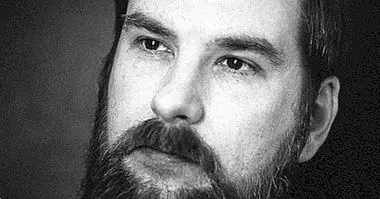Stendhal syndrome: extreme emotions before beauty
It is usual experience certain sensations when we have before us a stimulus that motivates them .
However, there are people with a great sensitivity to these stimuli, and they react exceptionally to the emotions that a work of art, a landscape or a film awakens.
Stendhal syndrome: discovering a singular disorder
In these extreme cases, we usually talk about "Stendhal syndrome ", Also known as" Traveler Syndrome "or" Florence Syndrome ".
The history of Stendhal Syndrome
In the year 1817, Henri-Marie Beyle, a French writer who used the pseudonym Stendhal, moved to the Italian city of Florence seduced by the colossal beauty and monumentality of the city, as well as his close connection with the best Renaissance artists. Once there, visiting the Basilica of the Holy Cross, he was able to describe a series of sensations and emotions that, decades later, would be recognized as the symptoms of the syndrome. In his writing Naples and Florence: A trip from Milan to Reggio, he recounted the sensations experienced in these terms:
"I had reached that level of emotion in which the celestial sensations given by the Fine Arts and the passionate feelings are tripped. Leaving Santa Croce, my heart was beating, life was exhausted in me, I was afraid to fall. "
The recurrence of this type of sensations, which caused dizziness, dizziness and fading, was documented as a unique case in the city of Florence, but science did not create a differentiated syndrome in this picture until, in 1979, the Florentine psychiatrist Graziella Magherini defined it and categorized it as Stendha syndromel.
Has Stendhal Syndrome been oversized? Really exist?

It is undeniable that some artistic expressions arouse emotions: the bristling of the hair listening to a song or the tears watching a romantic movie, are reactions that all people have experienced.
However, the Stendhal Syndrome refers to the experimentation of very intense sensations in front of an artistic piece, normally because of its beauty .
Today, many clinical psychologists recognize the disorder as true, but there is some controversy about it. After its coinage at the end of the 70s, at a historic moment in which globalization led to an increase in travelers on a global scale and to Florence in particular, l The number of reported cases increased considerably , which led to the Syndrome was also known as "Florence Syndrome".
For this reason that a part of the scientific community qualify that the excessive disclosure of the syndrome could be motivated by economic interests on the part of the city of Florence itself, to increase the reputation of the beauty of its artistic monuments, in order to attract an even greater number of visitors.
The key could be in the suggestion
Also, the interest aroused by Stendhal syndrome opens certain questions, such as reflecting if we are not paying ground and increasing the predisposition to experience these types of sensations described by Stendhal moved by a deep state of suggestion .
Bibliographic references:
- Chalmers, D. (1999). The conscious mind: in search of a fundamental theory. Barcelona: Gedisa
- Gómez Milán, E; Pérez Dueñas, C. Conscience: the brain puzzle
- Magherini, G. Stendhal syndrome. Ed. Espasa Calpe, Madrid, 1990
- Stendhal, Rome, Naples and Florence. Ed. Pretextos, 1999.



















